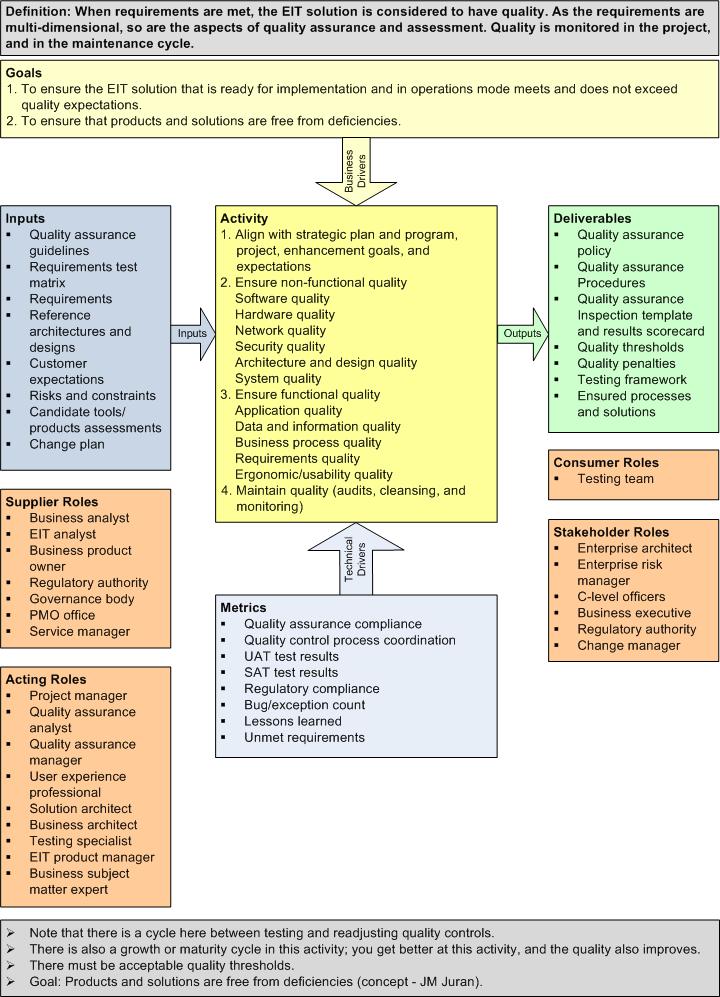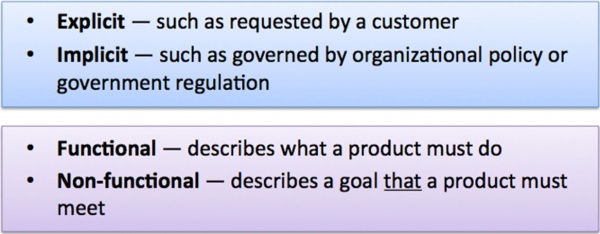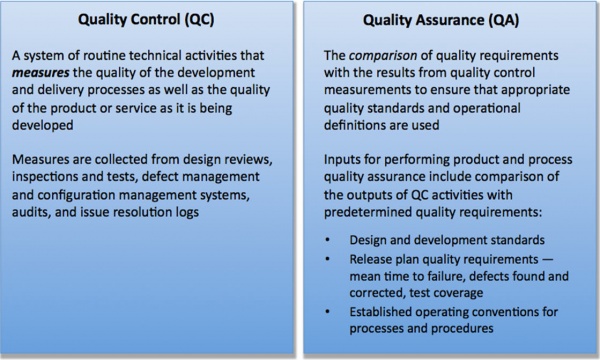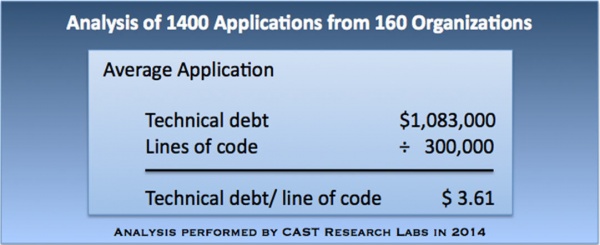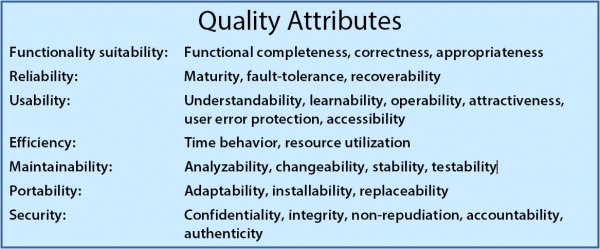Quality
Contents
1 Introduction to EIT Quality
Quality is a universal concept. Whether we are conscious of it or not, quality affects the creation, production, and consumption of all products and services. In this chapter, we look at quality in an enterprise information technology (EIT) context, including what quality is and what that means for an EIT environment (rather than on quality management systems). [1] Our focus is defining quality itself in such a way that its practical application is easily understood.
Quality is a critical concept that spans the software and systems development life cycle. It does not simply live within the quality department, nor is it simply a stage that focuses on delivered products. Rather, it is a set of concepts and ideas that ensure that the product, service, or system being delivered creates the greatest sustainable value when taking account of the various needs of all the stakeholders involved. Quality is about more than just how good a product is.
For consumers of EIT services and products in the enterprise, including those in-stream services and products that contribute to the delivery or creation of other EIT services and products, the idea of quality is inextricably bound with expectations (whether formal, informal, or non-formal). As more high-tech capabilities have become available to consumers at large, expectations for EIT have risen considerably. For this reason, it is crucial that EIT works with their enterprise consumers to understand expectations (and for consumers to understand what can reasonably be delivered).
2 Goals and Guiding Principles
The first goal of any organization is to clarify, understand, and then satisfy the stakeholders’ expectations of the products and services they receive. To do this, it is necessary to enable the organization to make information-based trade-offs when budgets, schedules, technical constraints, or other exigencies do not allow all expectations to be fully met.
ISO/IEC/IEEE describes quality as the “ability of a product, service, system, component, or process to meet customer or user needs, expectations, or requirements.” [2] This statement incorporates a number of important principles:
- Quality is not about what we do — it is about what the customers/users/stakeholders get. [3]
- Quality is not absolute, but is always relative to the particular context.
- Quality, as an ability (or a set of “-ilities”), is observable, and so is something we can measure and evaluate.
- Quality is about what the users (or stakeholders) expect, as much as what they might formally require.
This last point is echoed by respected writer on business and entrepreneurism, Peter Drucker, who wrote, “‘Quality’ in a product or service is not what the supplier puts in. It is what the customer gets out and is willing to pay for. A product is not ‘quality’ because it is hard to make and costs a lot of money, as manufacturers typically believe. That is incompetence. Customers pay only for what is of use to them and gives them value. Nothing else constitutes ‘quality’.” [4]
3 Context Diagram
Figure 1. Context Diagram
4 Key Quality Concepts
4.1 Measuring Quality
Quality is measurable. By measuring quality, aside from knowing how much quality there is, and whether it is increasing (or decreasing), we can also include it in the kinds of information-based trade-offs that organizations need to make so they meet their goals. Measuring quality also supports the application of management best practices to the goal of achieving, improving, and increasing quality.
An important principle from management theory is “what you measure is what you get.” Thus, it is an important principle that product quality should be measured. Measurement of product quality is focused on knowing whether, and to what degree, expectations are satisfied or requirements are met. An example from Agile would be to know whether a component meets its “definition of done.” [5]
4.2 Requirements Management
To be able to measure product quality requires that the organization is capable of good requirements management. Requirements management comprises the set of processes that an organization uses to gather, assess, evaluate, quantify, document, prioritize, communicate, and, ultimately, deliver the requirements of its stakeholders. Requirements might be those illustrated in the graphic below.
Figure 2. Requirement Type Options
Key goals of requirements management are to ensure that requirements are unambiguously stated, are universally agreed, and are understood in terms of their value to stakeholders.
Because requirements are fundamental to the delivery of a quality product, quality models (see Quality Models) are generally used as an aid to ensure that requirements statements are complete and comprehensive.
4.3 Quality Capability
Quality capability is the capacity and ability of the organization’s processes, procedures, methods, controls, and governance to deliver quality products.
In order to be confident about satisfying stakeholder requirements, the organization must also measure its quality capability, and, therefore, measure the quality of its processes, procedures, methods, controls, standards, and so on. The established way to create quality capability is by first introducing standard practices so that all participants in the process know what to expect, and to ensure that these practices are well understood and comprehensively adopted.
An organization’s quality capability often reflects its maturity. In a mature EIT organization, its members have a well-understood concept of their common processes and share a common vocabulary for talking about those processes. Various organizations have published versions of EIT maturity models, but there is a lack of general adoption of any model. In addition to making it easier for people to get their jobs done, standard practices also make it possible to methodically collect and implement lessons learned at specific points in a development project or at regular times during EIT production operations. This reflects the principle of continuous improvement.
4.4 QMS and QC vs. QA
The fundamental approach to achieving quality products and services is to develop processes and mechanisms for quality control (QC) and for quality assurance (QA). These are normally expressed as an organization’s quality management system (QMS), which is the collection of an organization’s business processes, quality policies and quality objectives directed toward meeting customer requirements
Although the terms QC and QA are often used interchangeably, there is a very meaningful difference between them as shown below.
Figure 3. QC vs. QC
A common misconception is that QA and testing are equivalent. In fact, testing is one of the tools of QC, because the aim of testing is the detection and quantification of errors, which then results in defect reports. By assessing information from defect reports (as part of QA), EIT can determine whether it is meeting its quality objectives.
4.5 Technical Debt and the Cost of Rework
For most organizations, software production is based on a balance, or set of compromises between requirements, budget provided, and time available. Whenever a decision is made to limit (or omit or defer) engineering work due to budgetary or time constraints, the resulting loss in quality (quantified as the amount of rework that would need to be done later to rectify the compromise) is commonly referred to as technical debt. [6] In essence, technical debt accrues when a “pay now or pay later” situation results in a “pay later” decision. Typical causes of technical debt include:
- The tendency to decide consciously not to fix known minor bugs prior to delivery because of time (or other) pressures
- A lack of knowledge about how much, and what kinds of, testing should be done prior to releasing a system into operational status, resulting in errors not being found until the system goes into production
Technical debt is referred to as a debt because the applied design or construction approach (often called a “kludge”), while expedient in the short term, creates a technical context in which the same work will likely have to be redone in the future — incurring a future cost (or debt). The total cost of such rework is typically greater than the cost of doing the work now (including increased cost over time), and escalates as technical debt accumulates.
The cost of rework is usually seen in EIT as fire-fighting. Hidden bugs from poorly designed or built code appear suddenly, usually at the worst possible time, precipitating an urgent fix. People must drop everything to get things running normally again.
The total cost in such situations is both in the work done to fix the bug as well as in the work that had to be dropped so that the bug could be fixed. Technical debt, however just refers to how much it would cost to fix the poor quality issue at hand; it doesn’t include the lost opportunity inherent in new work that had to be put off.
While estimates do vary, some studies suggest that maintenance activities — most of which are rework of some kind — can account for up to 80% of an EIT budget. An inevitable result of this kind of cost burden is that fewer resources are left available to fulfill requests to create new capabilities in support of new business opportunities.
Based on “the analysis of 1400 applications containing 550 million lines of code submitted by 160 organizations, CRL estimates that the technical debt of an average-sized application of 300,000 lines of code (LOC) is $1,083,000. This represents an average technical debt per LOC of $3.61.” [7] CRL considered only those problems that are “highly likely to cause severe business disruption,” not all problems. Several studies have undertaken efforts to quantify the economic impact of technical debt. According to Gartner research (as reported by Deloitte University Press, http://dupress.com/articles/2014-tech-trends-technical-debt-reversal/) “… global EIT debt [in 2014] is estimated to stand at $500 billion, with the potential to rise to $1 trillion in 2015.”
Figure 4. Application Analysis
5 Product and Service Requirements
Everyone understands that EIT must work to provide specified functional requirements, but few understand non-functional quality requirements. While functional requirements describe the functions (often called features) that a product should have (the things it should do), non-functional requirements describe requisite qualities (attributes) of the solution that are necessary to deliver the functionality. [8] Requirements may also be implicit, rather than explicit; for example, a feature may require interfacing with another application in order to deliver the information requested by the user, but the user may not know what other systems the application needs to talk to in order to get the information. Non-functional requirements are also used to judge the operation of the system, and as such are an important part of the requirements gathering and analysis process.
To ensure that all requirements are appropriately considered in product implementation, it is essential that appropriate quality measures are also selected in discussion with the consumer of the product. This facilitates an objective evaluation of product quality. Determining the most appropriate measures requires defining the attributes that are most important. For example, a software product used for creating calendar entries or mailing lists may not need the same degree of timeliness, accuracy, and precision as software used in safety critical applications. Requirements for high levels of certain quality attributes are more prevalent in critical enterprise systems that have impact on productivity, communication and revenues, and in the protection of personal, financial, or business proprietary information.
Quality requirements may be specified in service-level agreement (SLAs) or in release criteria for introducing new capabilities. Quality Models describes commonly accepted quality models, which can be used to help identify the required quality attributes (the quality requirements) to be specified in SLAs and release criteria.
6 Planning for Quality
Quality rarely happens by accident; if it does, it is even more rarely repeatable. Organizations that consistently achieve high quality do so by preparing the groundwork through appropriate planning. Quality planning is the process of "identifying which quality standards are relevant to the project and determining how to satisfy them.” Quality planning means planning how to fulfill process and product (deliverable) quality requirements.
Creating a quality plan for a product or project is related to, but different from, the task of creating a project plan. It takes these factors into account:
- The stakeholders’ requirements must be fully understood and prioritized.
- The organization’s appetite for accruing technical debt should be evaluated.
- The attributes that allow stakeholders to decide that they have received quality must be identified and agreed.
- Measurements to demonstrate that the required attributes are present must be identified and established.
- “Lessons learned” from past projects must be applied to the overall project plan.
6.1 Inputs to Quality Planning
Inputs include management information such as planned milestones or checkpoints in the development or acquisition plan, and the plans of other groups who will participate in the delivery. To be effective, quality planning means knowing when the earliest possible opportunities for meaningful measurement will occur. The earlier that the quality control activities can measure artifacts, the earlier that quality assurance can start to compare the results to requirements. The earlier that issues are detected, the earlier that corrective action can be applied, which almost always means less rework downstream, at smaller cost, and with less technical debt.
QA and QC should be planned to occur as part of requirements specification, architecture and data design, and system development, as well as through configuration management, formal testing, and release into production, regardless of the chosen development approach (e.g., so called “waterfall” vs. Agile [9], and so on).
Four of the most important inputs to quality planning are service-level agreements (SLAs), customer relationship management programs, release criteria, and acceptance criteria. Service-level agreements (SLAs) are one of the most common methods used for setting expectations, especially for delivery of EIT services. They are contracts between service providers (e.g., software developers) and service consumers (e.g., customers), and typically exist as agreements between business managers and EIT management for the creation and delivery of software (or other products and services). They specify levels of service quality that business managers require. They are also hugely important where external vendors are involved. Typically, SLAs address such service-related items as business value expectations, security, performance (with metrics), incident management, and dispute resolution.
The establishment of customer relationship management (CRM) programs is becoming more common in EIT organizations. The purpose of CRM programs is to consistently monitor performance to SLAs, to provide a framework for ongoing assessment of user satisfaction, and to establish essential effective ongoing communications with customers.
Similar to SLAs, release criteria are also contracts between those who produce products and services and those who consume them. Again, release criteria are agreements between business managers in the enterprise and EIT management, and are also critically important to contracts with third-party vendors when acquiring a product or component. When initiating projects to deliver new products or services, the expectations — the quality requirements — should be spelled out in the release criteria, so that they can be measured at each delivery point. In addition to requiring that all performance, functional, and similar requirements are verified [10] to have been met and validated [11] to work as the user expects, a simple common release criterion is the stipulation that all highest importance (e.g., “Severity 1” and “Severity 2”) defects must be corrected.
Essential to each of these approaches is agreeing on what to measure, that is, identifying the key attributes of a service or product that should be measured in order to monitor its quality. In some EIT organizations, the project team may depend on the receiving organization to establish acceptance criteria. In those cases, quality planning should embed those criteria in the quality plan, and adjust them as necessary to attain requisite measures.
6.1.1 The Quality Plan
The quality plan, part of the overall project plan (though it may be a physically separate document), is the output from quality planning. While covering all of the areas presented above, at a minimum, it describes these criteria:
- Product/service quality attributes linked to the release criteria or service levels specified in an SLA
- Measurements for each attribute, with range of acceptable values
- How and when measurements are collected and stored
- Location of all relevant documents, such as test plans, checklists, management plans, etc.
- Specific process improvements to be implemented
- Resources responsible for the above
7 Quality Models
Because quality is typically thought of very subjectively (and thus as very different from other factors affecting software delivery, such as resources, or time), practical need saw the development of various quality models by many large high-tech companies. In the US, the national drive to higher quality was captured in the US government’s Baldrige National Quality Program and its Award in 1987. We list a few of the most common quality models below. (They are contained in ISO/IEC 25010:2010.)
IBM’s CUPRMD (pronounced “cooperMD”) specified capability, usability, performance, reliability, maintainability, and documentation as key quality vectors for product quality. This was a good start, as it provided a framework of measurable product characteristics for assessing when a product was good enough to ship.
Under Bob Grady’s [12] impetus, HP developed FLURPS (functionality, localizability, usability, reliability, performance, supportability) and its successor, FURPS+, which enabled different parts of the company to emphasize particular qualities on top of the four FURPS categories.
In the UK, ICL introduced the Strategic Quality Model as part of its quality improvement process (developed with Philip Crosby). The SQM was ICL’s implementation of the European Quality Award model (created by the European Foundation for Quality Management).
Standardization efforts for software product metrics began in the 1990s. After several rounds of evolution, FRUEMPS (ISO/IEC/IEEE Std 25010) is the current product quality model. Its perspectives can be applied to hardware and software systems as well as to software products. ISO/IEC/IEEE Std 25010 also presents a model for quality in use, while ISO/IEC 25012 provides a complementary data-quality model.
7.1 The Product Quality Model
The Product Quality Model (ISO/IEC 25010:2010) focuses on internal and external perspectives of a product (or other organizational output, such as a service or system). It can be used by those specifying or evaluating software and systems, and can be applied from the perspective of their acquisition, requirements, development, use, evaluation, support, maintenance, quality assurance and control, and audit. The model can also be a very useful checklist when determining the adequacy of a set of a requirements.
The quality attributes or characteristics of the product that can be assessed or measured, which are commonly abbreviated as FRUEMPS are shown in the graphic below.
Figure 5. Quality Attributes
7.2 The Quality in Use Model
The Quality in Use Model (ISO/IEC 25010:2011) takes a different perspective. Rather than focusing on the product, it focuses on the effect of the product in a given context of use and the experience of using it. It stipulates the following characteristics [13] for measuring the quality of a product in use:
- Effectiveness — The product does what the user needs (what the user wants it to do)
- Efficiency — The product does not impede the task at hand
- Satisfaction — The user appreciates the product’s usefulness, trusts it, and finds pleasure, comfort, in using it
- Freedom from risk — The product mitigates economic risk, health and safety risk, and environmental risk
- Context coverage — The context of the product is complete
7.3 The Data Quality Model
A user’s experience of quality depends on how efficiently and effectively a software product works. In most cases, the correct working of a product depends on data. Therefore, it is important, from a software development perspective, to pay attention to the quality of that data. The Data Quality Model (ISO/IEC 25012:2008) applies to structured data acquired, manipulated, or used by a computer system to satisfy users’ needs, including data that can be shared within the same computer system or by different computer systems. Data quality concerns itself with such characteristics as accuracy, completeness, consistency, credibility, currency, and precision, as well as various data usage characteristics such as accessibility, availability, efficiency, and understandability.
8 Summary
Quality is an important concept in software and service development. It is defined as the degree to which stakeholder requirements and expectations have been satisfied. While quality is primarily concerned with requirements satisfaction, it also has some impact on how software products and services are created: creating a quality product is dependent on the quality of underlying tools, methods, processes and resources. A mature quality capability underpins the delivery of quality products and services.
Quality, as defined, is measurable. Achieving quality, then, is strongly supported through the use of a robust quality plan, which specifies which quality controls (measures) will be used by quality assurance to guide product development to maximizing quality (and avoiding technical debt).
It is important to understand that quality is not the act of doing quality management, quality control, or quality assurance, though these are important tools. Rather, quality is something that is perceived by the recipient of the product or service. Because of this, effective requirements management, with clear acceptance criteria is critical to success.
Finally, making appropriate use of the various quality models is a great way of ensuring that a quality plan has taken account of all essential factors.
9 Relevant SFIA Skills
We will focus on skills defined in SFIA, but if there are specific skills that are not in SFIA, you may present them here. For example, after the Software Engineering Competency model (SWECOM) has been harmonized with SFIA in mid 2015, skills from the SWECOM can be cited.
9.1 Roles
Roles identified in the common list of roles, based on roles in ITIL, can be selected and listed here. You can find the roles at https://computer.centraldesktop.com/itbok/folder/3156969/#folder:3895640
Note also that SFIA has introduced some “profiles”: https://computer.centraldesktop.com/itbok/file/31608104/
9.2 Standards
The list of IEEE CS standards is at https://computer.centraldesktop.com/itbok/folder/3895640/#folder:4137641
If you have questions about the standards, ask Chuck.
10 References
[1] For a detailed explanation of the quality management system (QMS), there is the ISO 9000 family of standards. ISO 9000:2005 Quality management systems — Fundamentals and vocabulary provides a good introduction, and ISO 9001:2008 Quality management systems — Requirements (approximately 30 pages) describes the requirements for a formal quality management system. If it is important for your organization to be certified as ISO 9000-compliant, you want to learn about those standards.
[2] SEVOCAB (http://pascal.computer.org/sev_display/index.action), which is formalized as ISO/IEC/IEEE 24765.
[3] What we do is the subject of quality management systems and their associated fields of quality control and quality assurance.
[4] Drucker, P. F. (1986). Innovation and Entrepreneurship: Practice and Principles. New York: Harper Row, p. 228.
[5] And knowing, of course, how complete is the “definition of done” itself.
[6] Cunningham first coined the term technical debt in 1992 as a software design metaphor that highlights the underlying costs associated with the compromise between the short term gain of getting software out the door and getting the release done on time versus the long term viability of the software system. http://www.ontechnicaldebt.com/blog/ward-cunningham-capers-jones- a-discussion-on-technical-debt/ (accessed 8/26/2014).
[7] http://www.castsoftware.com/research-labs/technical-debt-estimation (accessed 8/26/2014).
[8] For a good list of non-functional requirements, check ISO/IEC/IEEE Std. 29148.
[9] Completion of QA and QC items should be an essential component of the definition of done.
[10] Verification is the “process of providing objective evidence that the system, software, or hardware and its associated products conform to requirements (e.g., for correctness, completeness, consistency, and accuracy) for all life cycle activities during each life cycle process (acquisition, supply, development, operation, and maintenance), satisfy standards, practices, and conventions during life cycle processes, and successfully complete each life cycle activity and satisfy all the criteria for initiating succeeding life cycle activities” (IEEE 1012-2012 IEEE Standard for System and Software Verification and Validation).
[11] Validation is the “process of providing evidence that the system, software, or hardware and its associated products satisfy requirements allocated to it at the end of each life cycle activity, solve the right problem (e.g., correctly model physical laws, implement business rules, and use the proper system assumptions), and, and satisfy intended use and user needs” (IEEE 1012-2012 IEEE Standard for System and Software Verification and Validation.
[12] Robert B. Grady, Practical Software Metrics for Project Management and Process Improvement, Prentice Hall, 1992 (ISBN 0-13-72084-5).
[13] Although flexibility is not included in this standard, it is often requested by stakeholders.
